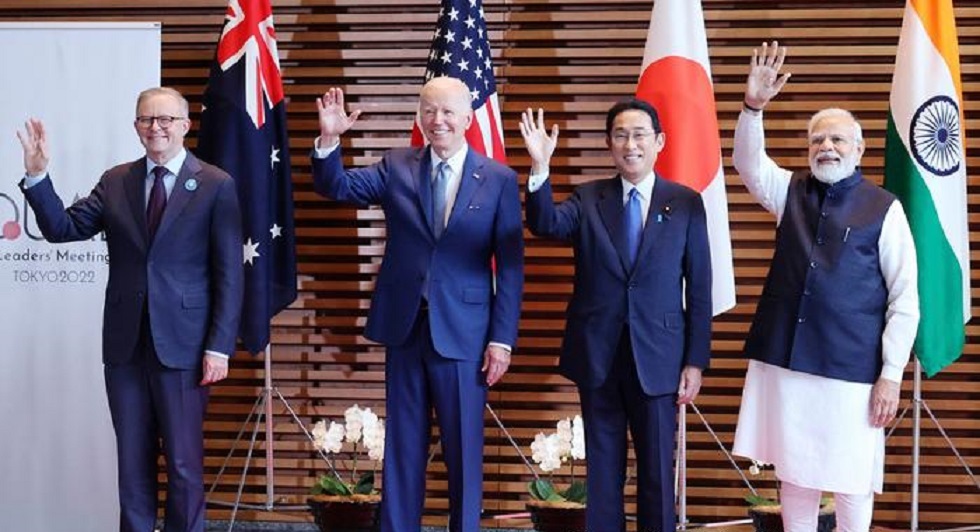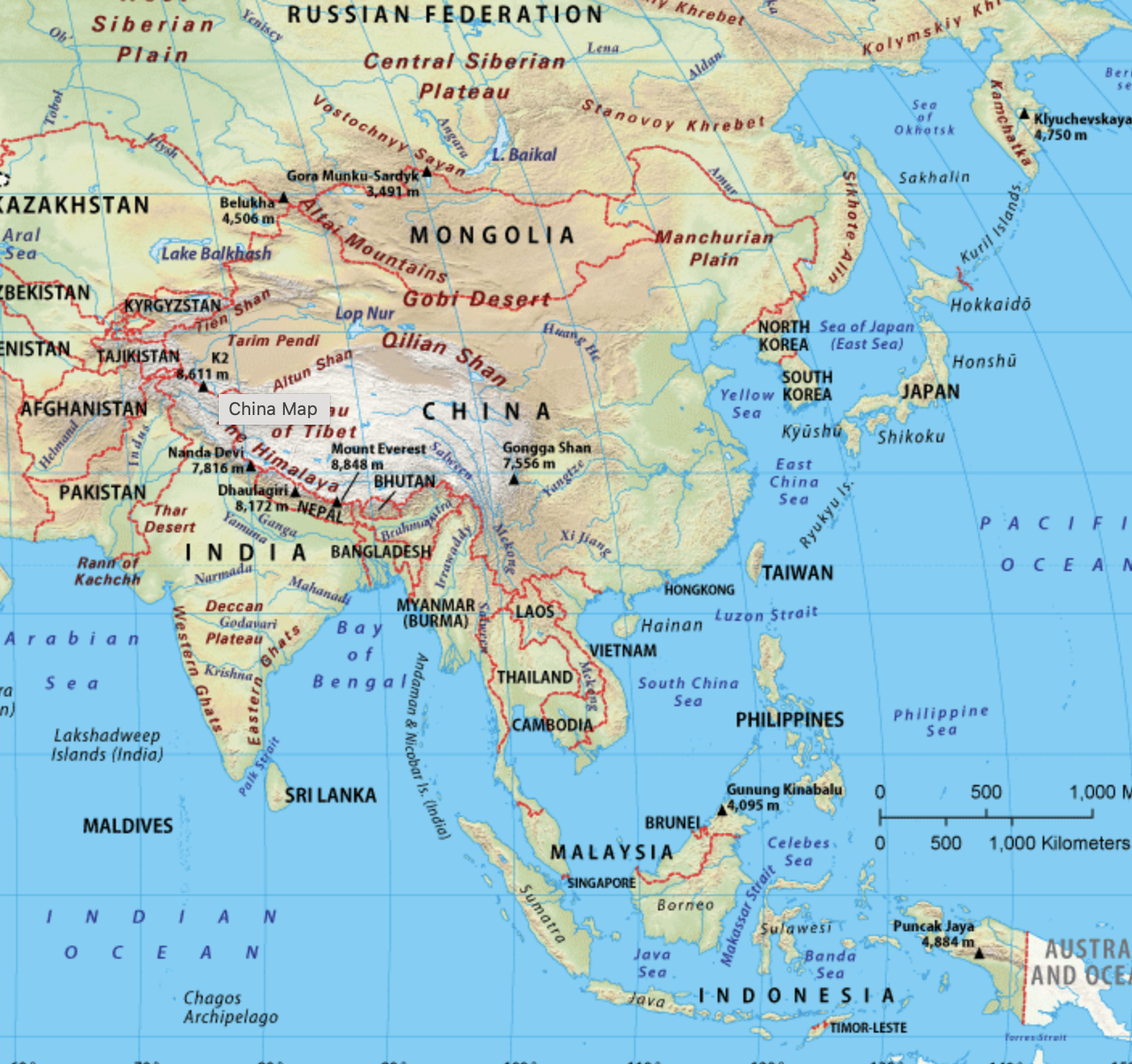Home

India’s Foreign Policy and Minilateralism in South Asia
- Details
- Written by: Preeti Sharma
- Category: Foreign Policy
- Hits: 288
https://youtu.be/a23lYjnmjBw?feature=shared
Recently Preeti Sharma discussed upon "India’s Foreign Policy and Minilateralism in South Asia" on 27th December 2024, an aspect to be understood looking at the geopolitical climate around India in South Asia to formulate a proactive foreign policy. Special thanks to MAHENDRA GAUR sir who is working great in bringing out the essence of foreign policy of India through FPRC for upcoming scholars.
Under this discussion Dr Sharma elaborated that India’s shift toward minilateralism in South Asia reflects its pragmatic approach to overcoming the inefficiencies of traditional multilateral platforms like SAARC. Minilateralism emphasizes smaller, focused coalitions that address specific regional challenges, offering India greater flexibility, speed, and influence in achieving its strategic objectives. This approach allows India to enhance connectivity, trade, and energy cooperation while countering challenges like terrorism, climate change, and China’s growing influence.
It was also shared that through initiatives like BIMSTEC, BBIN, and the Quad, India engages with like-minded partners to address regional concerns. Projects such as the Kaladan Multi-Modal Transit Transport Project, the BBIN Motor Vehicle Agreement, and hydropower collaborations with Bhutan and Nepal exemplify India’s efforts to strengthen regional connectivity and economic integration. These platforms also allow India to promote shared goals, such as maritime security, digital integration, and sustainable development, while bypassing the geopolitical stalemates often seen in multilateral forums.
However, India faces challenges in implementing minilateralism, including diverging partner interests, resource constraints, and external interference, particularly from China. Platforms like the Quad often encounter differing priorities among members, while initiatives like BIMSTEC and BBIN suffer from slow implementation due to financial and logistical hurdles. Additionally, China’s Belt and Road Initiative poses a direct challenge to India’s regional leadership.
To overcome these obstacles, India must align partner objectives, streamline overlapping initiatives, enhance domestic coordination, and build institutional capacity. Expanding regional inclusivity and fostering trust among smaller neighbors is also crucial for strengthening India’s leadership.
In the current geopolitical climate, minilateralism serves as a vital tool for India to assert its influence, foster regional integration, and address pressing challenges, positioning itself as a key player in South Asia’s development and a counterweight to external pressures.
She concluded that Minilateralism is a vital tool in India's foreign policy, enabling targeted regional cooperation, addressing inefficiencies in multilateral platforms, and countering external pressures like China's influence. By enhancing connectivity, fostering inclusivity, and streamlining initiatives, India strengthens its regional leadership, advancing its strategic objectives while promoting stability, growth, and collaboration in South Asia.

Reflecting on a Decade of Progress: India’s Act East Policy
- Details
- Written by: Preeti Sharma
- Category: Foreign Policy
- Hits: 1350
Reflecting on a Decade of Progress: India’s Act East Policy
This year India is celebrating the 10th Anniversary of its Act East Policy, so its high time to review the achievements and challenges of this diplomatic step of the foreign policy experts of India. India knocked at the eastern world with its new 'Act East Policy' that represented a dynamic diplomatic strategy aimed at enhancing economic, strategic, and cultural relationships with the vast Indo-Pacific region across multiple dimensions. Unveiled in November 2014 during the 12th ASEAN-India Summit held in Myanmar, this policy builds upon the foundation laid by the 'Look East Policy' of 1992. While the original Look East Policy primarily concentrated on fostering economic cooperation with ASEAN, the Act East Policy broadens this scope significantly.
The Act East Policy aspires to engage India's extended neighbourhood within the Indo-Pacific, incorporating not only economic collaboration but also a comprehensive framework for security cooperation and broadened engagement with countries in Southeast Asia and East Asia. Japan, South Korea, and members of the Association of Southeast Asian Nations (ASEAN) fall under the core focus of this policy. This strategic pivot underscores India's commitment to forging deeper connections and partnerships with nations across this region, reflecting a more integrated and multi-faceted approach to regional diplomacy. By advancing initiatives that encompass trade, investment, Infrastructure Development, cultural exchange through People-to-People connect, diaspora engagement, and security partnerships, India seeks to solidify its presence and influence in the Indo-Pacific region, thereby contributing to regional stability and prosperity.
Under this policy, India took significant initiatives i.e. economic ventures involving regional forums like the East Asia Summit (EAS) and Asia-Europe Meeting (ASEM), security endeavors including joint military drills and counter-terrorism collaboration and cultural initiatives promoting festivals, educational exchanges, and fostering mutual comprehension. The Act East Policy strives to bolster connectivity between Northeastern states, including Arunachal Pradesh, and neighboring countries, thereby strengthening foreign relations. India’s Act East Policy is anchored in 4 key pillars – Culture, Commerce, Connectivity, and Capacity Building. Lets review the performance of AEP based on these criteria.
Under the Neighbourhood First Policy, development collaboration is a cornerstone of our interactions with adjacent nations, concentrating on strengthening bilateral ties across all dimensions of socio-economic progress, including trade and connectivity. India’s developmental aid is customized to the requirements of partner nations and strives to fulfill as many of their requests as technically and financially viable. The main channels of India's developmental assistance include Lines of Credit (LOC), grant aid, High Impact Community Development Projects (HICDP), technical consultancy, disaster relief, humanitarian aid, and capacity-building initiatives under the Indian Technical and Economic Cooperation Programme (ITEC). Indian proficiency is exhibited in project planning and execution across a broad spectrum of sectors, covering both infrastructure and socio-economic development.
India and Japan have formalized a 2+2 Ministerial Dialogue. PM Modi stressed expanding this dialogue to include the US-Japan-India trilateral at the ministerial level. New Delhi's involvement in QUAD meetings with the US, Japan, and Australia, particularly post-2017, highlights India's interest in Indo-Pacific strategic discussions. India and South Korea have also established multiple bilateral mechanisms for strategic cooperation. India's economic ties with ASEAN have significantly grown, culminating in over $131 billion in trade in 2022-23 and extensive bilateral investments.ASEAN being one of the major trade partners of India with a share of 11% in India's global trade. The bilateral trade stood at USD 122.67 billion during 2023-24. On diving deep inside, AEP took significant steps connecting Northeast India to East Asian nations and former Foreign Minister of India Mrs. Sushma Swaraj in 2015, underscored North Eastern Region as ‘land bridge to ASEAN’. Northeast India, comprising eight states, shares a 5,182-kilometer international border with China, Myanmar, Bangladesh, Nepal, and Bhutan. Renowned for its ethnic and cultural diversity, the region's strategic location facilitates integration with South, East, and Southeast Asia. The Act East Policy aims to enhance this integration, fostering economic development and regional cooperation. General VK Singh in 2015 stated that the Act East Policy prioritizes Northeast India, including Arunachal Pradesh, by enhancing border trade, connectivity, cultural exchanges, and people-to-people contacts with the ASEAN region. Bilateral and regional initiatives focus on developing physical infrastructure and fostering economic and cultural ties to strengthen this strategic interface. The Act East Policy (AEP) serves as a bridge between North Eastern India, including Arunachal Pradesh, and the ASEAN region. Various projects have been undertaken to enhance connectivity of the North East States through Myanmar and Bangladesh, including the Kaladan Multimodal Transit Transport Project and the Protocol on Inland Water Transit and Trade (PIWT&T). Additionally, the use of Chattogram and Mongla Ports in Bangladesh facilitates the movement of goods to and from India. The government has also sanctioned projects to develop Inland Water Transport (IWT) infrastructure on National Waterways NW-2 (Dhubri-Sadiya stretch of river Brahmaputra) at a cost of Rs. 461 Crore. (ii) NW-16 (river Barak) & Indo-Bangladesh Protocol (IBP) route at a cost of Rs. 145 Crore. in the North-Eastern Region (NER) from 2020-21 to 2024-25. Economic Backwardness of Northeast India, demands precise diplomatic actions under AEP by connecting links with ASEAN and East Asian countries. The Act East Policy seeks economic prosperity for Northeast India through export expansion to East and Southeast Asia, leveraging cultural and geographic proximity. Despite its resource wealth, the region remains underdeveloped, reliant on central aid. Although the proposed projects aim to spur export-led growth, but it is imperative to address insurgency, market infrastructure, connectivity, technology, and governance issues for longterm growth century of India and South East.
(The author is an Assistant Professor in School of International Studies as an expert of Himalayan Geopolitics & South Asia)